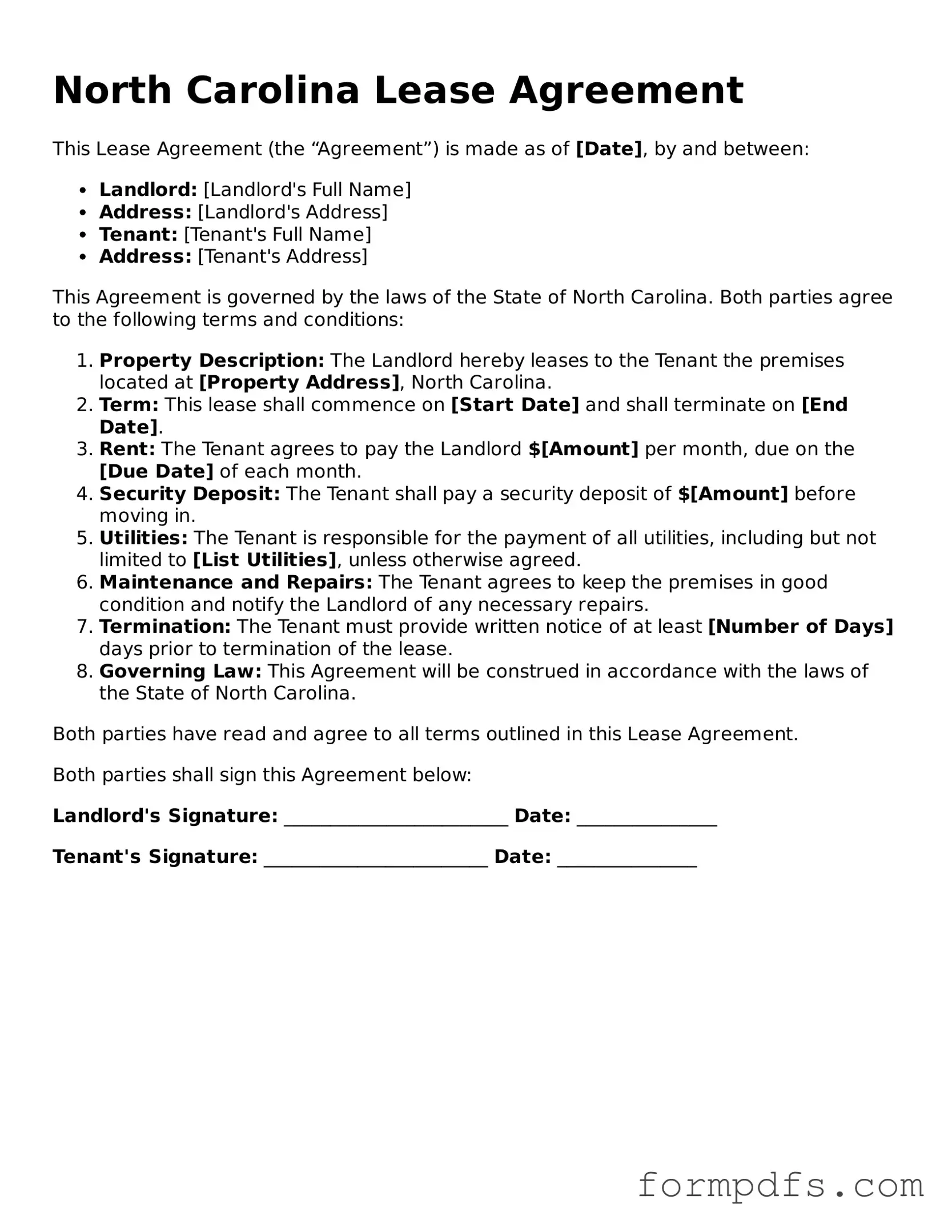What is a North Carolina Lease Agreement?
A North Carolina Lease Agreement is a legally binding document that outlines the terms and conditions under which a landlord rents property to a tenant. This agreement typically includes details such as the duration of the lease, rent amount, security deposit, and responsibilities of both parties.
What should be included in a North Carolina Lease Agreement?
Essential elements of a North Carolina Lease Agreement include the names of the landlord and tenant, property address, lease term, rental payment details, security deposit information, maintenance responsibilities, and terms for terminating the lease. It is crucial that all parties understand and agree to these terms before signing.
How long can a lease last in North Carolina?
In North Carolina, leases can vary in length. They can be short-term, such as month-to-month agreements, or long-term, lasting a year or more. The duration should be clearly specified in the lease agreement to avoid confusion later.
Is a written lease required in North Carolina?
While verbal agreements are legally binding in North Carolina, it is highly recommended to have a written lease. A written document provides clarity and serves as evidence of the terms agreed upon, protecting both the landlord and tenant in case of disputes.
What is the typical security deposit amount in North Carolina?
In North Carolina, the maximum security deposit a landlord can charge typically equals one and a half months’ rent for leases longer than 12 months. For shorter leases, the limit is usually one month’s rent. This deposit is meant to cover potential damages or unpaid rent.
Can a landlord enter the rental property without notice?
No, a landlord cannot enter the rental property without proper notice unless there is an emergency. Generally, landlords must provide at least 24 hours' notice before entering the premises for repairs or inspections, respecting the tenant's right to privacy.
What happens if a tenant breaks the lease?
If a tenant breaks the lease, they may be responsible for paying rent until the property is re-rented or until the lease term ends, depending on the terms outlined in the lease agreement. It is advisable for tenants to communicate with their landlord to discuss possible options or solutions.
Are there any specific laws regarding lease agreements in North Carolina?
Yes, North Carolina has specific laws governing lease agreements, including regulations on security deposits, eviction processes, and tenant rights. Familiarizing oneself with these laws can help both landlords and tenants navigate their responsibilities and rights effectively.
How can disputes be resolved between landlords and tenants?
Disputes can be resolved through open communication, mediation, or legal action if necessary. Many landlords and tenants find it beneficial to address issues directly and amicably before escalating to more formal measures, such as court proceedings.
Where can I find a North Carolina Lease Agreement template?
Templates for North Carolina Lease Agreements can be found online through legal websites, local real estate associations, or by consulting with a real estate attorney. It’s essential to ensure that any template used complies with North Carolina laws and is tailored to the specific rental situation.
